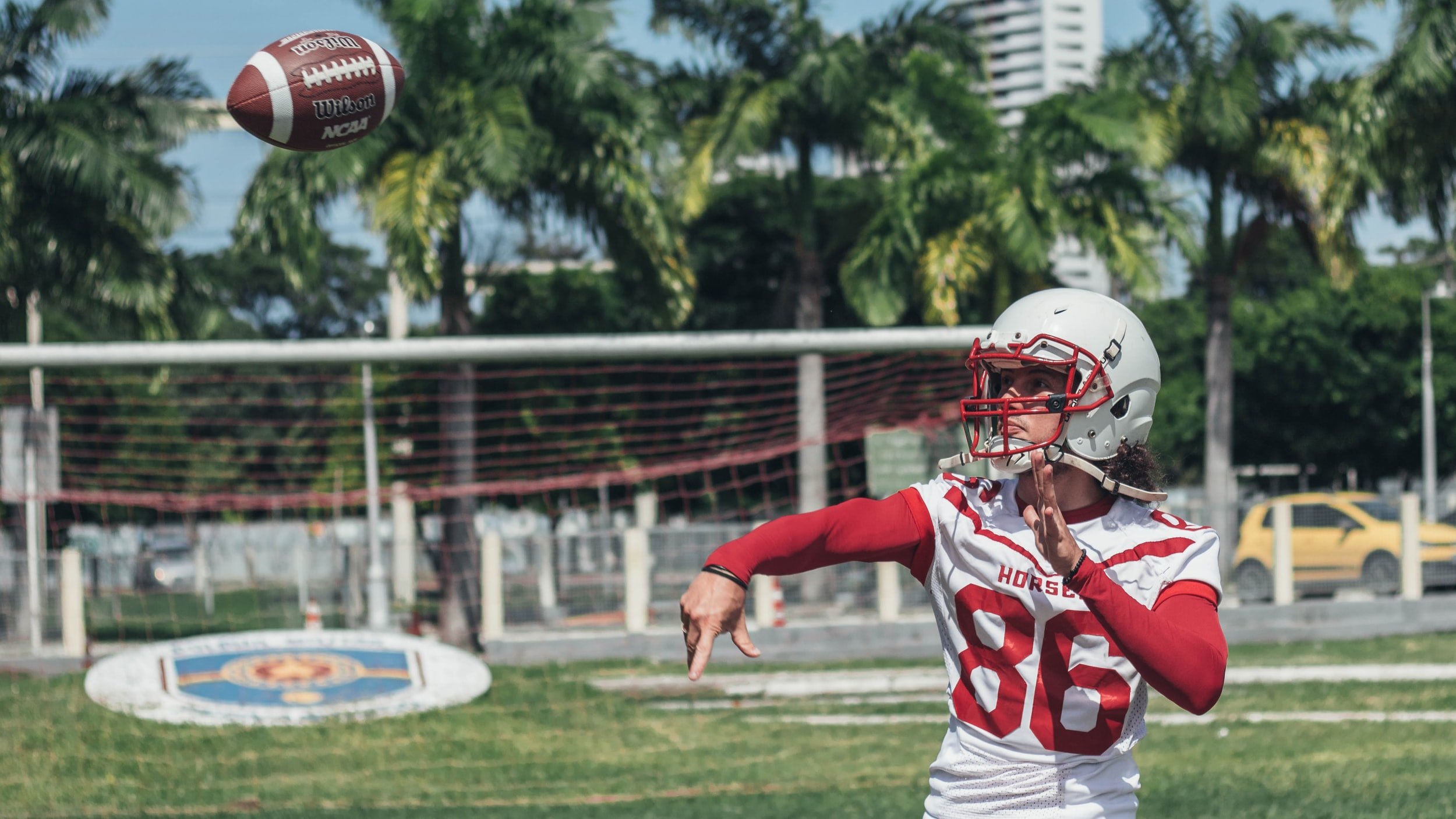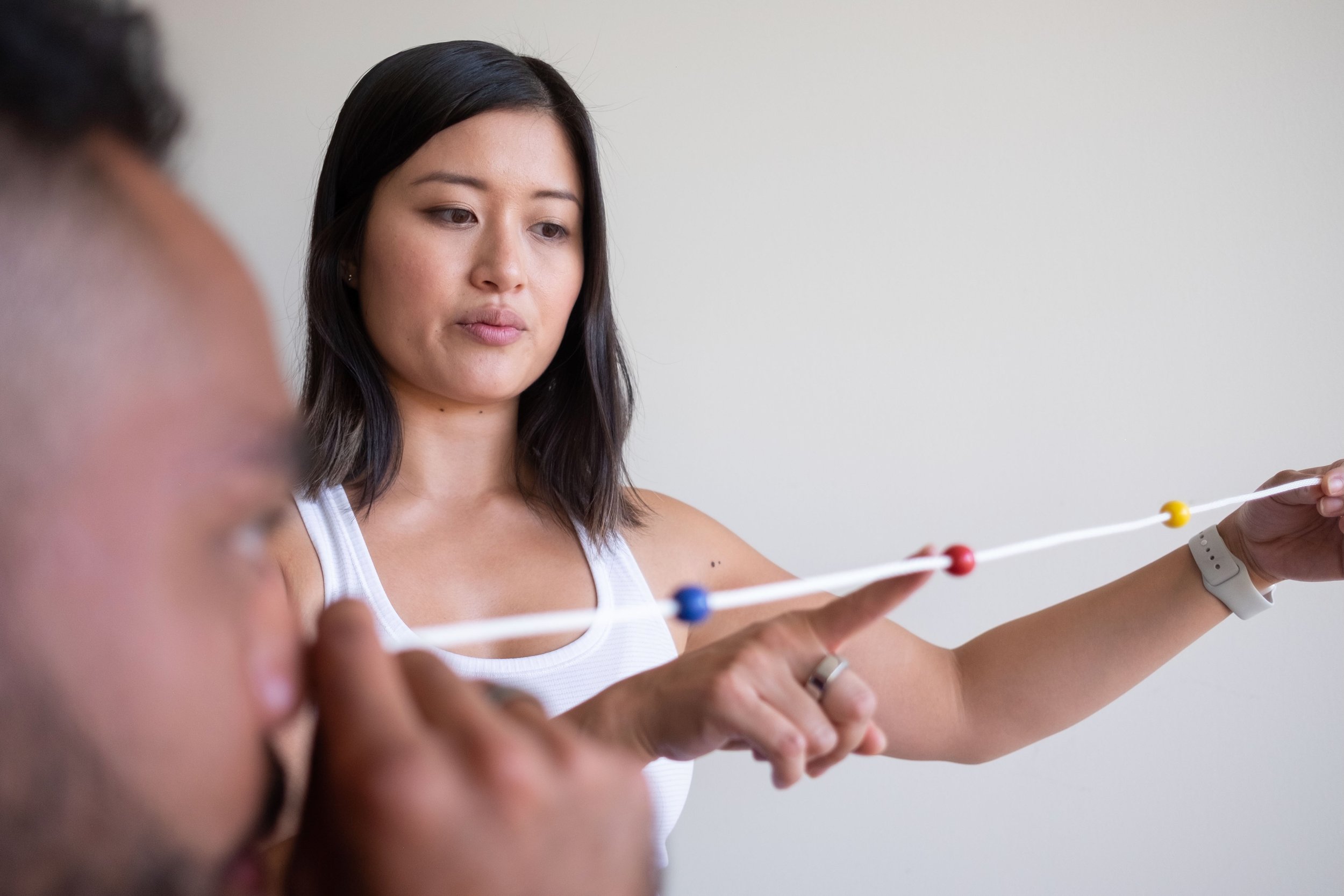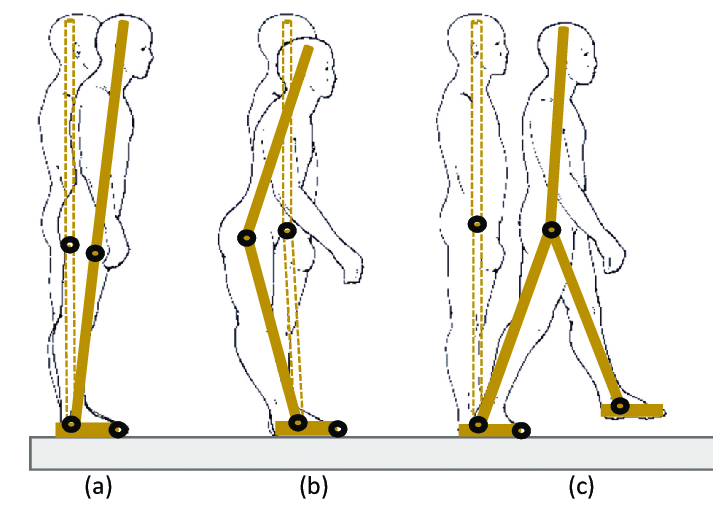How Do We Stay Balanced?
How do we walk without falling over? We step from one foot to the other without thinking about it and can walk in the dark and over gravel without a second thought.
What is Balance?
Balance is the ability to maintain our body’s centre of gravity over our base of support. Our centre of gravity is an imaginary line that hangs down from our belly button region down to the floor. In order to stay balanced, that line should land within our base of support on the floor. Our base of support is the area that consists of our feet and the area between our feet. If someone uses a cane, then the base of support also includes the cane.
If our balance system is functioning properly, we should be able to see clearly while we move, identify our orientation with respect to gravity, determine the direction and speed of our movement, and make automatic postural adjustments depending on the activity that we’re doing and the environment that we’re in.
In order to do all of that, we require a well-coordinated sensorimotor control system consisting of input from our visual, vestibular and proprioceptive systems and motor output to our eyes and muscles.
Sensory Inputs
Visual Input
Light strikes the sensory receptors in our retinas and delivers visual cues about where we are relative to objects in our environment to the brain.
Vestibular Input
When our head turns, fluid in our inner ears shifts and exerts pressure against the sensory receptors and sensory information about motion, equilibrium, and spatial orientation is delivered to the brain.
Proprioceptive Input
As our skin, muscles and joints move, stretch, and experience pressure, sensory information about the body’s movements and spatial orientation is sent to the brain.
Integration of Sensory Inputs
Information from all of the sensory inputs is sent to the brain stem, where they are processed and integrated with information from the cerebellum and cerebral cortex. The cerebellum is the area of the brain responsible for the coordination of movement and the cerebral cortex is responsible for higher-level information processing.
As an example, when someone is learning to throw a ball, the cerebellum is involved with refining the movement through repeated exposure to the movement, allowing the individual to optimize their balance and motor control of the specific movement. The cerebral cortex is involved with using information from past and previously learned experiences to inform the individual if they have to make changes to the way that they throw the ball if they are standing on a different surface (i.e. sidewalk vs. grass), as it may require a different pattern of movement.
As sensory integration takes place, the brain stem sends impulses to the muscles that control movements of the eyes, head and neck, trunk, and legs, to allow the individual to both maintain balance and have clear vision while moving.
Motor Outputs
Motor output for eye movement control
There are 2 main mechanisms for eye movement control: those that stabilize our vision when our head is moving and those that keep the image of a visual target in focus as the target moves in space. The mechanisms that stabilize our vision when our head is moving are related to the vestibulo-ocular reflex and will be discussed below.
For those that keep the image of a visual target in focus as the target moves in space, there are 3 methods in which our eye movements control the focus of the image by changing the angle of gaze to align with the image of interest:
Vergence allows us to adjust the focus of an image based on its distance. Accommodation is the mechanism by which our eyes change focus when looking at a near target compared to a distant target. Convergence is the mechanism by which our eyes converge (come towards our nose) to allow for single binocular vision when focusing on a near target.
Smooth pursuit allows us to use our eyes to track the movement of a visual target in space. Smooth pursuit movements are voluntary, smooth, and continuous eye movements with velocity and trajectory determined by the moving visual target.
Saccades consist of short and rapid eye movements of predetermined trajectory that direct the eyes toward a visual target in order to bring the object-of-interest into view.
Motor Output for Gaze Stabilization
There are 2 main mechanisms for gaze stabilization: the vestibulo-ocular reflex and the optokinetic system.
The vestibulo-ocular reflex allows us to maintain focus during head movements by having the vestibular system send automatic motor control signals to the muscles of the eyes. When the head is not moving, the number of impulses from the vestibular organs on the right side is equal to the number of impulses coming from the left side. When the head turns toward the right, the number of impulses from the right ear increases and the number of impulses from the left ear decreases. The difference in impulses sent from each side controls eye movements and stabilizes gaze during active head movements (e.g., while running or watching a hockey game) and passive head movements (e.g., while sitting in a car that is accelerating or decelerating).
The optokinetic system allows us to track a moving object with our eyes when our head remains stationary (e.g., observing individual telephone poles on the side of the road as one travels by them in a car, or observing stationary objects while walking past them). It involves a combination of slow-phase and fast-phase eye movements, such that when the moving object moves out of the field of vision, you move your eyes back to the position it was in when it first saw the object.
Motor output for postural control
In order to stay upright in a variety of situations, there are 2 main mechanisms for postural control:
Body orientation is the positioning of the body’s alignment with respect to gravity, the support surface, the visual environment, and other sensory reference frames. Maintaining vertical is essential to navigating our life as it helps us sit, stand, and walk on a very small contact surface area (i.e. our feet and buttocks when we sit and our feet when we stand and walk). Humans assess whether they are vertical through their eye position and head direction. We use visual verticality in our environment, as well as an internal model of verticality that allows us to perceive whether we are oriented in an upright position without visual reference.
Body stabilization consists of the postural responses that result from maintaining balance or anticipating movements.
Postural responses to maintain balance involves reactive postural adjustments, including ankle, hip and stepping strategies. The ankle strategy (a) is primarily generated about the ankle joint and is usually associated with small amounts of anterior and posterior sway when standing on a firm surface. When perturbations are too large to be compensated for with the ankle strategy, or when the support surface is compliant or too small, we may resort to the hip strategy (b) to maintain balance. The hip strategy consists of large and rapid lateral movement at the pelvis. If the postural disturbance is large enough, then we may have to resort to the stepping strategy (c) to avoid falling. At that point, an effectively placed step should be sufficient to maintain balance.
Postural responses that occur from anticipating voluntary movement involve activating muscles in the trunk and legs prior to when a movement is initiated. This response is in anticipation of the potentially destabilizing force that may be caused by the movement. By activating those postural muscles prior to the internal perturbation, there is less risk of losing balance and falling. We use previous sensory experiences and learning to make our decisions when anticipating postural demands, which increases our ease of movement through unconscious postural adjustments dependent on the integration of sensory and motor information.
Balance Training
When there is a conflict of sensory input coming from our eyes, vestibular organs, and muscles and joints, we can experience impaired balance and symptoms that are associated with imbalance, such as dizziness, vertigo, vision problems, nausea, fatigue, and poor focus and concentration.
Concussions and vestibular disorders can cause injury to one or more of those organs providing sensory input, which can disrupt the sensorimotor-control system and a person’s perception of balance and equilibrium.
Balance training involves addressing the affected area(s) along the sensorimotor pathway that may be contributing to imbalance. Therefore, a thorough evaluation of the whole balance system is crucial. Balance training helps to reduce symptoms, prevent falls and injury, and improve overall quality of life.









